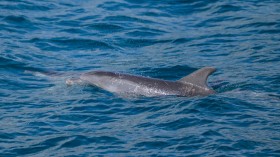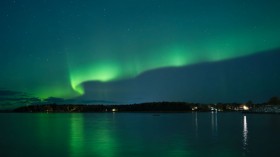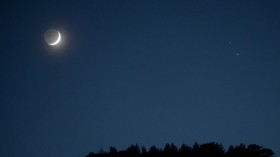The adorable star sands on a beach in Japan were actually once inhabited by protozoa, which means it is the exoskeleton of the one-celled organisms.
There are many imaginative literary works about the star sands on Iriomote Island in Japan, and some people even think of poetry once the unusually-shaped sand is brought up.
Legend of the Star Sands
According to tradition, the Northern Star and Southern Cross were the parents of the star-shaped sands. Star-shaped sand grains can still be found on the beach since the stars' offspring were slain by a sea serpent after falling from the sky and entering Okinawa's ocean.
Science Behind Star Sands
The tiny shells, according to scientists, are created by Baclogypsina sphaerulata, an ocean-dwelling one-celled protozoa. Armlets on their exoskeletons help them move around and serve as food storage. When these protozoa pass away, their shells float around in the water and are washed ashore by the tide.
Beaches of Okinawa's Iriomote, Hatoma, and Taketomi islands are the beaches that have star sands.
The star-shaped hollow shells are mixed in with sand grains that have more common shapes.
The stars are much more prevalent on the beach during stormy and rough seas because they are loosened from the sea grass where they usually gather.
Hoshizuna-no-Hama, often known as the star sand beach, is found on the Okinawa island of Iriomote. "Hoshizuna" is the Japanese term for sand.
Despite the fact that sand may be found in countless forms and sizes, star sands that form naturally are undeniably amazing, Treehugger reports.
Baclogypsina Sphaerulata
In the Indo-Pacific, beaches are home to Baclogypsina sphaerulata. Due to their distinctive shape and abundance on particular beaches, Baclogypsina sphaerulata exoskeletons are sometimes known as star sand. Remains of the ancient animal Baclogypsina sphaerulata have been discovered in Precambrian rocks.
The exoskeletons of Baculogypsina sphaerulata can be tan, colorless, off-white, or dark brown. The lighter-colored particles frequently contain black spots or blotches of darker hue on their surface. The shells' surfaces can be smooth or rough, and in the related species Baclogypsina sphaerulata, the shell is perforated with multiple holes, called fenestrations, according to the McCrone Group.
Also Read: Vacation Spot Salton Sea Oasis Now Just Dust Bowls, Receding Waters, Dead Fish - California
Iriomote Island, Japan
Despite being the second-largest island in Okinawa, Iriomote is largely deserted and undeveloped. The island is one of four locations in Okinawa and Kagoshima that UNESCO put on its Natural World Heritage list in 2021, according to Visit Okinawa Japan.
Iriomote, the southernmost national park in Japan, is also the largest of the islands that make up Iriomote-Ishigaki National Park. With an area of more than 200 square kilometers, the park is home to unique plants and animals, some of which are unique to Japan.
According to Japan-Guide.com, Iriomote boasts a number of stunning beaches that provide chances for swimming, snorkeling, and diving. The majority of the beaches near Iriomote lack any amenities for the general public, and some of these beaches can only be reached by boat due to the island's coast's limited accessibility for vehicles.
Related Article: Hidden Gems: 5 Low-Profile National Parks Worth Traveling For
© 2024 NatureWorldNews.com All rights reserved. Do not reproduce without permission.





